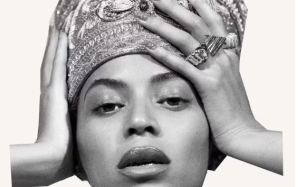The Art of Album Cover Design: 5 Iconic Covers and Their Stories
Album covers are more than just packaging—they’re the first visual impression of the music inside. A great cover can tell a story, evoke an emotion, or capture a cultural moment before you even press play. For women who appreciate music not only for its sound but for its aesthetic, album cover art is a form of visual poetry—bold, emotional, and unforgettable.
From surreal photography to minimalist statements, these iconic covers have helped shape how we experience music. Here’s a look at five legendary album covers and the stories behind them.

1. The Beatles – Abbey Road (1969)
One of the most recognized images in music history, the Abbey Road cover was shot outside the iconic EMI Studios in London. Photographer Iain Macmillan had just ten minutes to capture the band walking across the zebra-striped crosswalk. What looks like a simple stroll became a cultural landmark, inspiring tributes and theories for decades—including wild rumors that it was a secret clue to Paul McCartney’s “death.”
The image’s lasting power lies in its simplicity: no text, no band name—just four legends walking into history.
2. Pink Floyd – The Dark Side of the Moon (1973)
Designed by Storm Thorgerson and Aubrey Powell of Hipgnosis, this prism-on-black masterpiece is both minimal and mind-bending. It perfectly reflects the album’s themes of time, pressure, and human experience—without depicting a single person or instrument.
The spectrum of light passing through a triangular prism became an instant symbol of classic rock and continues to represent a balance of precision, mystery, and emotion in music design.
3. Nirvana – Nevermind (1991)
Arguably the most provocative baby photo ever, Nevermind’s underwater shot of a naked infant chasing a dollar bill hooked on a fishing line stirred up as much controversy as it did attention.
Photographed by Kirk Weddle, the cover symbolized innocence corrupted by greed—perfectly aligning with Nirvana’s raw, anti-establishment sound. The image captured the early ’90s grunge ethos in one unforgettable frame, solidifying the album’s place in rock history.mellow indie or lo-fi and slowly taper into ambient or instrumental tracks as bedtime approaches.in fitness-focused designs.

4. Beyoncé – BEYONCÉ (2013)
Minimal, bold, and powerful, Beyoncé’s surprise self-titled album cover was a departure from typical pop iconography. All-black with her name in a clean pink font, it let the music—and the moment—speak for itself.
Released without prior promotion, the visual simplicity of the cover reinforced her confidence and control. It wasn’t just an album; it was a statement of creative autonomy, forever shifting how artists release and present their work.
5. Fleetwood Mac – Rumours (1977)
With its elegant black-and-white image of Mick Fleetwood and Stevie Nicks, Rumours feels theatrical and intimate all at once. Shot by Herbert Worthington, the cover echoed the drama within the band’s personal relationships and emotional songwriting.
The flowing robes, whimsical pose, and vintage stylings captured the album’s haunting beauty and timeless mystique—becoming as iconic as the harmonies within.
Final Thoughts
Album covers are more than decoration—they’re storytelling tools that create emotional and visual entry points into the music. Whether minimalist or dramatic, literal or abstract, a great cover lingers in your mind as much as the songs it represents.
In the art of music, sometimes the first note is seen, not heard.








